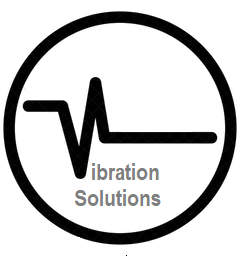Vibrational Solutions is a powerful software that includes several tools related to structural dynamics.
It offers various techniques for modal analysis, both experimental and operational, enabling precise resonance detection for fault identification and substructural coupling.

Experimental Modal Analysis (EMA)
EMA is a technique used to determine the dynamic characteristics of a structure or system. It involves conducting physical tests on the structure or system and analyzing the acquired data to extract modal parameters such as natural frequencies, mode shapes, and damping ratios.
The process typically involves applying controlled forces or vibrations to the structure, measuring the corresponding response using sensors and then processing the data to identify the modal properties. These modal properties provide valuable insights into the dynamic behavior and structural integrity of the system.
EMA is commonly used in various fields, including structural engineering, mechanical systems, aerospace, automotive, and civil engineering. The results obtained from EMA can be used for various purposes, such as structural design optimization, condition monitoring, vibration control, and troubleshooting.
Operational Modal Analysis (OMA)
Operational Modal Analysis (OMA) is a technique used to identify the modal parameters (natural frequencies, damping, and mode shapes) of a structure or object while it is in operation.
Unlike other techniques that are typically conducted in controlled environments like laboratories or with specific boundary conditions, OMA is performed in-situ under real-world load conditions. This ensures that the forces acting on the structure are realistic in terms of level, location/direction of application, and frequency/order content.
However, conducting the test during operation means that the input forces cannot be quantified as they can be in other techniques. OMA is a response-only technique, which means that no input forces are measured during the test.


There are numerous instances where it is convenient to view a complex engineering structure as a collection of simpler components, or substructures. For instance, the theoretical analysis of a large structure can be done more efficiently by breaking it down into its component parts, analyzing each part separately, and then reassembling the entire structure based on the models of each individual component.
One of the particularly powerful applications of the substructure coupling approach is to a range of problems that require combining the subsystem or component models derived from different sources – perhaps from quite disparate analyses but often from a mixture of analytical and experimental studies. Thus we may seek to combine component models from theoretical analysis with others from modal tests.
A common approach for evaluating structural integrity involves establishing a baseline using relevant modal parameters obtained from vibration signals of the intact structure. Subsequent test results are then compared to these data, with any changes in modal parameters indicating potential structural failure. Understanding the effects of physical parameter changes allows for assessment of the location and magnitude of the failure.
However, detecting early damage can be challenging as it only causes minor frequency shifts. This is due to the fact that in traditional frequency analysis, the frequency components of a signal are identified at evenly spaced lines in the spectrum, which depend on the length of the signal.
Therefore, the need to utilize advanced algorithms that offer inter-line information about frequency to enhance the accuracy of frequency evaluation is necessary.

